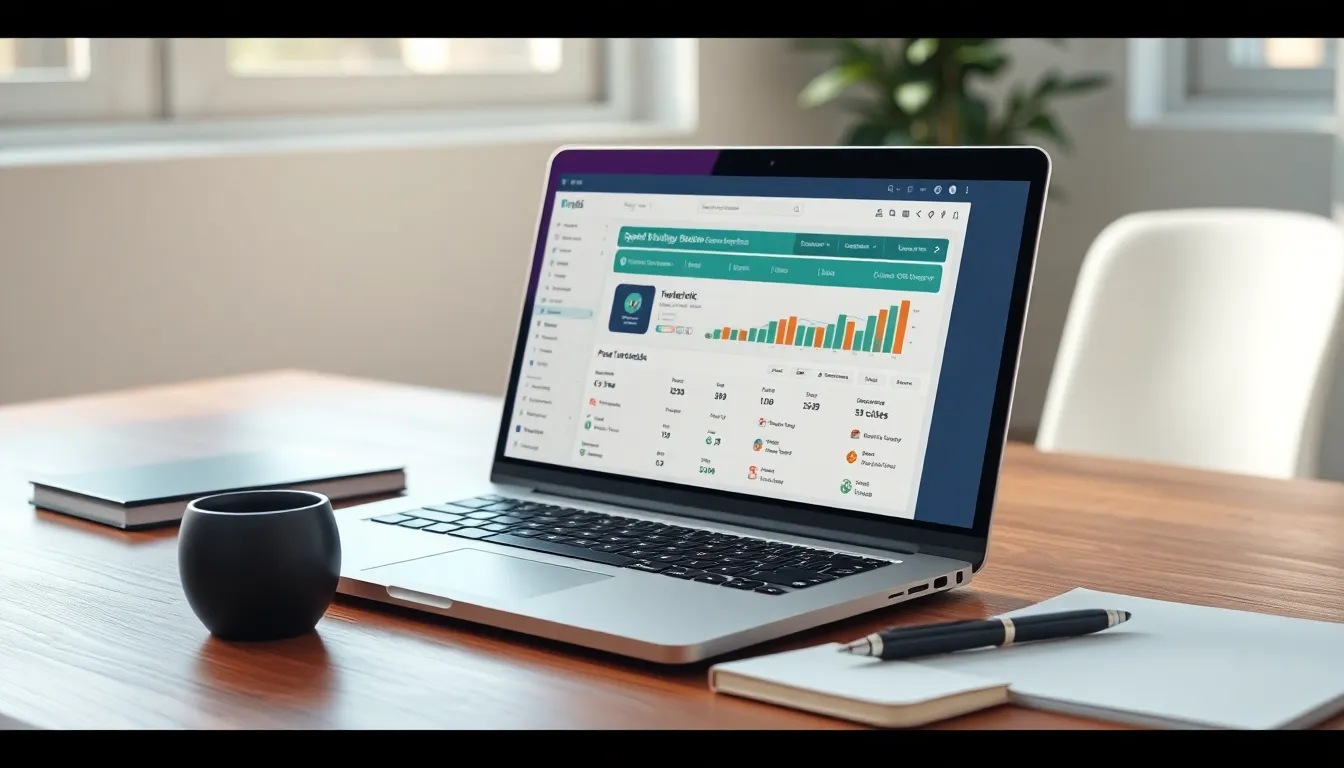In today’s fast-paced digital world, a sluggish laptop can be incredibly frustrating. Whether it’s for work, gaming, or streaming, users expect their devices to perform at peak efficiency. Fortunately, boosting laptop speed isn’t just a dream; it’s achievable with the right strategies and insights.
From optimizing system settings to upgrading hardware components, there are numerous ways to enhance performance. Understanding these methods can transform a slow machine into a lightning-fast powerhouse. With a few simple tweaks, users can experience smoother multitasking, quicker boot times, and an overall more responsive device. Dive into the world of laptop speed boosts and discover how to unlock your device’s full potential.
Table of Contents
ToggleUnderstanding Laptop Speed Boost
Improving laptop speed offers noticeable benefits, enhancing user experience across various tasks. By understanding what laptop speed boost entails and recognizing its importance, users can take effective steps to optimize their devices.
What Is Laptop Speed Boost?
Laptop speed boost refers to the enhancement of system performance, leading to quicker processing times and improved responsiveness. This boost can result from several factors, including upgrading hardware components like RAM and solid-state drives (SSDs) or adjusting software settings to optimize resource allocation. Techniques such as disabling unnecessary startup programs and managing background processes contribute to this speed improvement, providing users with a more efficient computing experience.
Why Is Laptop Speed Important?
Laptop speed affects productivity, gaming enjoyment, and streaming quality. Enhanced speed allows for seamless multitasking, enabling users to run multiple applications simultaneously without lag. Faster boot times minimize wait periods, improving efficiency. In gaming, higher speed ensures smoother gameplay, while in streaming, it reduces buffering and enhances video quality. Overall, better laptop speed leads to a more responsive and enjoyable user experience, making it a critical factor in device performance.
Factors Affecting Laptop Speed

Laptop speed relies on several factors, notably hardware components and software optimization. Understanding these elements is crucial for users aiming to enhance their device’s performance.
Hardware Components
Hardware components significantly influence laptop speed. Key elements include:
- Processor (CPU): The CPU’s clock speed and core count directly affect processing power. Higher clock speeds and more cores enable quicker data handling for demanding applications.
- Memory (RAM): Sufficient RAM allows for smoother multitasking. Upgrading from 8GB to 16GB or more often prevents slowdowns during simultaneous operations.
- Storage Type: Solid-state drives (SSDs) dramatically improve read and write speeds compared to traditional hard disk drives (HDDs). Opting for an SSD can reduce boot times and application launch times.
- Graphics Card (GPU): A dedicated GPU enhances performance in graphic-intensive tasks such as gaming and video editing. More powerful graphics cards provide smoother visuals and quicker rendering.
- Cooling System: Effective cooling prevents thermal throttling. Overheating can slow down performance, so ensuring sufficient cooling aids in maintaining optimal speeds.
Software Optimization
Software optimization plays a vital role in enhancing laptop speed. Important considerations include:
- Operating System Updates: Regularly updating the OS ensures access to performance improvements and security patches. It addresses bugs that may hinder speed.
- Startup Programs: Disabling unnecessary startup programs reduces boot time and frees up resources. Managing which applications launch at startup is essential for optimal performance.
- Disk Cleanup: Regularly clearing cache files and temporary data prevents clutter. Using built-in tools or third-party software helps maintain system efficiency.
- Task Management: Monitoring and managing background processes can free up CPU and RAM. Identifying memory hogs allows users to allocate resources more effectively.
- Antivirus Software: While essential for security, poorly optimized antivirus programs can slow down system performance. Selecting efficient antivirus options minimizes their impact on speed.
By addressing hardware and software components, users can significantly boost laptop speed.
Tips for Achieving Laptop Speed Boost
Achieving a laptop speed boost involves both hardware upgrades and software optimizations. Implementing these techniques can lead to significant performance improvements.
Upgrading Hardware
- Increase RAM: Upgrading to at least 8GB of RAM enhances multitasking capabilities, allowing for seamless application use.
- Install SSD: Replacing an HDD with an SSD reduces boot and load times, improving overall system responsiveness.
- Upgrade CPU: Installing a more powerful processor increases computing speed, which benefits demanding applications and tasks.
- Enhance Cooling System: Investing in better cooling solutions prevents overheating, which can throttle performance.
- Optimize GPU: Upgrading the graphics card is crucial for gaming and graphic-intensive applications, ensuring smoother visuals and better frame rates.
Optimizing Software
- Manage Startup Programs: Disabling unnecessary startup items improves boot time and frees up system resources for active tasks.
- Perform Disk Cleanup: Regularly removing temporary files and unused applications creates additional space, facilitating faster data access.
- Update Operating System: Keeping the OS current ensures the latest performance improvements and security patches are in place.
- Adjust Visual Effects: Reducing or turning off visual effects in system settings can free up resources, enhancing overall speed.
- Monitor Background Processes: Using task managers to track and limit resource-heavy applications helps maintain optimal performance levels.
Tools for Monitoring and Improving Speed
Monitoring and enhancing laptop speed involves using specific tools designed for these tasks. These tools provide insights into system performance and offer opportunities for maintenance and upgrades.
Benchmarking Software
Benchmarking software measures laptop performance against standard metrics, identifying areas needing improvement. Popular tools include:
- Cinebench: Tests CPU performance with 3D rendering tasks.
- CrystalDiskMark: Assesses storage speed, highlighting SSD and HDD performance.
- Geekbench: Provides comprehensive CPU and GPU performance metrics.
- PCMark: Evaluates overall system performance, reflecting real-world usage scenarios.
These benchmarking tools generate clear reports, allowing users to track changes after implementing upgrades or optimizations.
Maintenance Tools
Maintenance tools help manage system health, freeing up resources and improving speed. Essential maintenance tools include:
- CCleaner: Cleans temporary files, cache, and registry errors.
- Malwarebytes: Detects and removes malware, ensuring system integrity.
- Defraggler: Defragments hard drives, improving data access speeds.
- System Mechanic: Optimizes various system settings for enhanced performance.
Utilizing these tools regularly ensures a laptop remains fast, responsive, and free of unnecessary clutter.
Enhancing laptop speed is essential for an improved user experience. By focusing on both hardware upgrades and software optimizations, users can unlock their device’s full potential. Simple adjustments like managing startup programs and performing regular maintenance can lead to noticeable performance gains.
Investing in components like RAM and SSDs can significantly reduce boot times and enhance multitasking capabilities. Utilizing performance monitoring tools helps users stay informed about their system’s health. With the right strategies in place, anyone can transform a sluggish laptop into a fast and responsive machine, ultimately boosting productivity and enjoyment.


